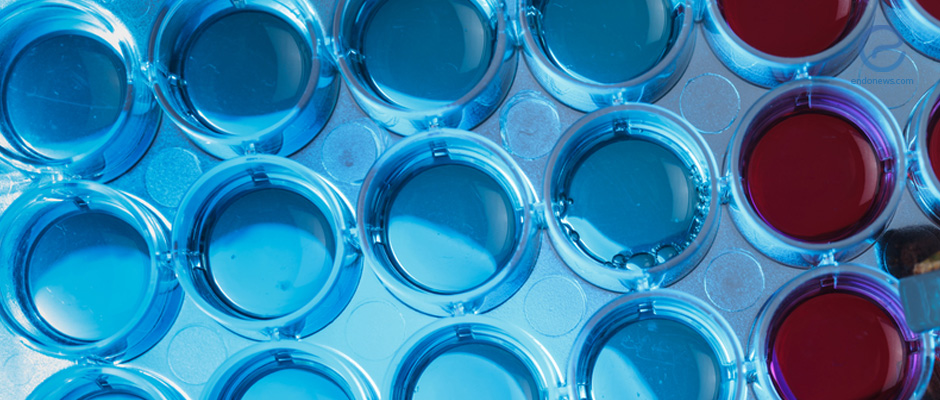Combination Polymorphisms of Three "Estrogene-Related" Genes Increase the Risk of Endometriosis
Aug 16, 2017
In combination, polymorphisms in PGR, CYP17A1, and CYP19A1 genes have been shown to increase an individual's risk of endometriosis.
Key Points
Highlights:
- The researchers wish to understand how the combination of polymorphisms of certain genes namely PGR, CYP17A1, and CYP19A1 impact an individual’s risk of having endometriosis.
- The combined analysis of the above genes suggests a gene-gene interaction in the susceptibility to endometriosis, that may contribute to the identification of molecular biomarkers.
Importance:
- The genetic mechanisms that cause endometriosis are still not understood today. Elucidating this genetic component of endometriosis could yield a potential biomarker, may lead to targeted and effective therapies.
- The genes examined here are either involved in the initial stages or final stage estrogen synthesis or progesterone, which is a strong estrogen antagonist.
What’s done here?
- From 2011-2015, patients were recruited in one of two institutions in Rio de Janeiro, Brazil. The study ultimately consisted of 161 endometriosis patients and 179 controls. The stage of endometriosis determined by the revised American Fertility Society classification system.
- Information collected from the patients were: body mass index (BMI), severe pain symptoms, and infertility.
- A genomic extraction kit used to extract genomic data from the participant’s peripheral blood samples. Real-time polymerase chain reaction (PCR) used to genotype the following SNPs:
- PGR + 331C > T (rs10895068) (progesterone receptor gene),
- CYP17A1 -34A > G (rs743572) and
- CYP19A1 1531G > A (rs10046). After PCR, allele detection and genotype determination were conducted.
- The derived data was subject to various statistical analysis tests.
Key results:
- Among a few key demographic differences in the endometriosis group compared to the control group were younger age and lower BMI with a longer menstrual flow in endometriosis group.
- Individually there was no difference in the genotypic and allelic frequencies of the 3 polymorphic genes studied. On the other hand, when the genotypes were combined, there appeared to be a positive correlation with the presence of endometriosis. These findings indicate that gene-gene interactions may decide one’s likelihood of getting endometriosis.
Limitations of the study:
- This study only utilizes participants from one part of the world. This can be problematic as there may be variability in the genome in people from different parts of the world.
- There could be other genetic components that lead to the positive correlation with endometriosis; however, the researchers only concentrated on these three polymorphisms.
- The controls included women with other gynecological diseases, providing lower risk estimations.
- Not all the endometriosis patients were diagnosed surgically and histopathologically.
Lay Summary
Cardoso et al. recently published a paper titled “Combined Effect of the PGR +331C > T, CYP17A1 -34A > G and CYP19A1 1531G > A Polymorphisms on the Risk of Developing Endometriosis” in Revista brasileira de ginecologia e obstetrician. The authors discuss how specific forms of certain genes namely PGR, CYP17A1, and CYP19A1 impact an individual’s risk of getting endometriosis. These 3 genes are thought to be involved in the estrogen pathway.
This study was conducted over the course of 4 years at two research institutes in Rio de Janeiro, Brazil. The participants were split into two groups: those with endometriosis and those without. The researchers collected a peripheral blood sample and they extracted genomic DNA from those samples. They utilized real-time polymerase chain reaction (PCR) for the genotyping of the following SNPs: PGR + 331C > T, CYP17A1 -34A> G and CYP19A1 1531G > A SNPs. The data was then subject to statistical analysis.
The results showed that there were no significant differences in the genotypic and allelic frequencies of the polymorphisms PGR + 331C > T, CYP17A1 -34A > G and CYP19A1 1531G > A; however, the combined genotype positively correlated with a diagnosis of endometriosis. This could mean that the three genes interact with one another and it is this interaction that results in endometriosis. This information can be used to create biomarkers and more targeted therapies against the disease.
Research Source: https://www.ncbi.nlm.nih.gov/pubmed/28614857
Genes Polymorphism Estrogen Genotype Alleles Biomarkers hormones

